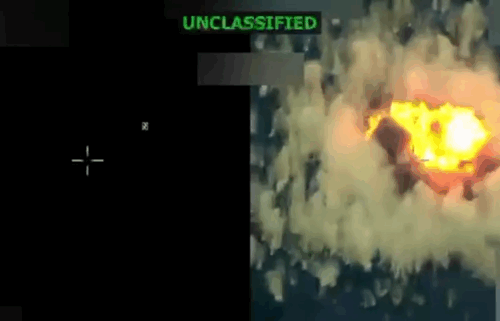Universe’s strongest explosions captured by ground telescopes for first time

Some of the strongest explosions that occur in the universe are gamma-ray bursts.
They’re quick, incredibly powerful and happen about once a day as the light from some distant cataclysm reaches us, the result of massive stars collapsing or neutron stars merging in galaxies far, far away.
Two specialized telescopes. HESS and MAGIC, in Namibia and Spain respectively, helped astronomers observe and measure two gamma-ray bursts that included about 100 billion times as much energy as visible light. This is the most energetic radiation ever measured from gamma rays, creating the brightest source of high-energy light in the universe, the astronomers said.
This also marks the first time gamma-ray bursts, or GRBs, have been detected with ground-based telescopes.
Three studies published Wednesday in the journal Nature detail the findings from the two telescopes.
“Gamma-ray bursts are the most powerful explosions known in the universe and typically release more energy in just a few seconds than our Sun during its entire lifetime — they can shine through almost the entire visible universe,” said David Berge, one of the study authors and head of gamma-ray astronomy at DESY, a research center in Germany that operates particle accelerators used to investigate the structure of matter.
Gamma ray bursts begin with a bright flash that only lasts for about a second or less, followed by an afterglow that fades over time.
Mysterious bursts
Since they were discovered by chance while using satellites in the 1960s, scientists have been trying to understand these mysterious bursts.
The two gamma ray events were detected in July 2018 and January 2019. Gamma-ray satellites created by NASA initially alerted the bursts and within seconds, the global astronomy community was aware and aiming telescopes at both events.
“We were able to point to the region of origin so quickly that we could start observing only 57 seconds after the initial detection of the explosion,” said Cosimo Nigro, study author with the MAGIC group at DESY. “In the first 20 minutes of observation, we detected thousands of photons from GRB 190114C,” he said, referring to the January burst.
One burst originated from four billion light-years away, meaning the light from the burst traveled that long to reach us. The other burst originated from six billion light-years away.
“The detection came quite unexpected, as gamma-ray bursts are fading fast, leaving behind an afterglow which can be seen for hours to days across many wavelengths from radio to X-rays, but had never been detected in very-high-energy gamma rays before,” said Andrew Taylor, study author and DESY theorist who contributed to the HESS telescope analysis. “This success is also due to an improved follow-up strategy in which we also concentrate on observations at later times after the actual star collapse.”
The researchers believe the telescopes, which allowed for the successful detections, will set the stage for more insightful observations in the future. In fact, they don’t believe the bursts they detected were unique, so this is just the beginning.
“MAGIC has opened a new window to study GRBs,” said Susumu Inoue, coordinator of the MAGIC Transients working group that analyzed the gamma ray data. “This will pave the way for a much deeper understanding of these fascinating cosmic explosions.”
Astronomers are intrigued by the prospect of being able to peek inside these powerful explosions, which are even stronger than previously believed, and understand the physical processes taking place that create the bursts.
“Much of what we’ve learned about GRBs over the past couple of decades has come from observing their afterglows at lower energies,” said Elizabeth Hays, study author and Fermi project scientist at NASA’s Goddard Space Flight Center. “Now, thanks to these new ground-based detections, we’re seeing the gamma rays from gamma-ray bursts in a whole new way.”




